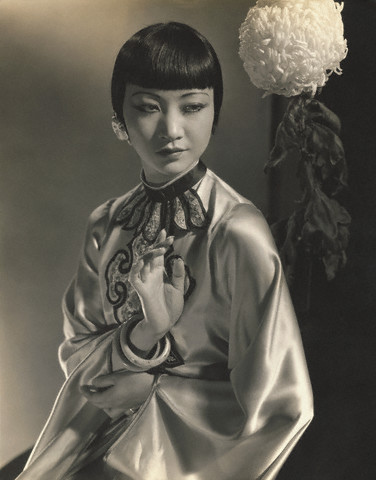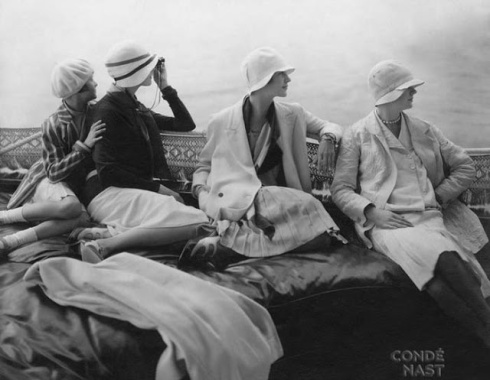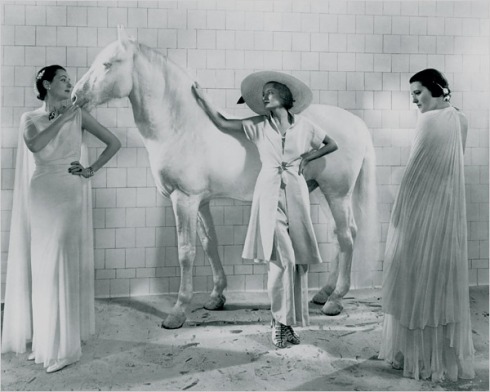February 14, 2006 a photograph of a pond taken by Edward Steichen sold for more than $2.9 million, easily setting a world record for the highest amount a photograph has sold for at auction, Sotheby’s said (today this record has been broken a few times). The photograph, titled ”The Pond-Moonlight” and taken in Mamaroneck, Westchester County in 1904.
There are only three prints which were made under Steichen’s supervision, and are a great example of a rare vintage photograph by an artist who had an influence on later 20th-century photographers. Steichen’s early painterly photographs, possibly naive to our image-soaked modern eyes, helped establish photography as an art form.
The Pond-Moonlight 
A few days ago I went to an exhibition with photographs by Edward Steichen and realised I recognized so many of his pictures, but knew nothing of the man himself. Reading about his tumultuous life, I got fascinated with this multi talent.
.
Edward Steichen was born in Luxembourg in 1879, migrated with his parents to the United States only two years later, eventually settling in Milwaukee. In his mid-teens be became an apprentice lithographer and took up photography as a hobby. But his first love was painting and it was painting that inspired him to travel to Paris in 1900. Years later Steichen destroyed the canvasses in his possession, instead he learned to achieve Impressionist effects in his photographs, by blurring his lenses with petroleum jelly or manipulating his negatives and prints in the darkroom.
“ If it looked like a painting, it was art”.
(the photographer struggled to gain the recognition as an artist)
Self Portraits
 Steichen with his wife Clara Smith
Steichen with his wife Clara Smith 
 .
.
Steichen’s pictorialist period ended in 1917, when he joined the United States Army and created an aerial photography unit in northern France to gather intelligence about artillery positions and troop movements behind enemy lines. And after the war, Steichen’s lifelong interest in horticulture resulted in near-abstract images of flowers, plants and insects.
Then he went through a bad and expensive divorce. By 1922, when Steichen was 43, he was undergoing what we now call a midlife crisis. He had serious misgivings about his talent as a painter and told fellow photographer Paul Strand that he was sick and tired of being poor. He needed something to renew his energies and a means of making his alimony and child-support payments.
Flowers
.
A crucial change happened in 1923, when Condé Nast offered him a job as chief photographer for Vanity Fair, which meant essentially house portraitist, but regular fashion work for Vogue was also part of the deal, following Baron Adolphe de Meyer, who was fashion photography’s first star. Some of his pears felt like Steichen was selling out to commercialism.
Steichen’s portraits for Vanity Fair brought him new fame. In part because of the status of celebrity subjects as Gloria Swanson and an incredibly handsome Gary Cooper. But on his Vogue assignments Steichen produced pictures as extremely careful and precise as any painting by Gainsborough or Sargent—even though he needed to fill page after page, month after month.
.
Steichen’s corner-to-corner attentiveness, coupled with his painterly training, allowed him to make fashion pictures that ranged in style from classic 19th-century illustrations to Art Nouveau and Art Deco. “He was designing with his camera and after starting out as a [soft-focus] pictorialist, he brought sharp focus to bear and had a tremendous effect on the field.”
Typical of his work is a 1933 picture of a model wearing a patterned dress by a designer named Cheney. Steichen poses her in front of a two-tone background covered with calligraphic curves that echo the dress, then adds a white hat, scarf and gloves, a bentwood chair and tulips—all of which make a composition reminiscent of a Matisse painting. But he also used movie conventions to make even studio photographs—which are by definition artificial—appear to be life at its most enviable. If two women and a man sat at a well-appointed dinner table, Steichen made sure that part of another table, set with equal lavishness, appeared behind them, turning the studio into a fine restaurant in which the black dresses and tuxedo found their proper context.  Matchsticks and matchboxes study for fabric
Matchsticks and matchboxes study for fabric Piano of Steichen’s own design, one of his favorite props .
Piano of Steichen’s own design, one of his favorite props .
Astonishing is a pattern of matchsticks and matchboxes he photographed as a study for a fabric (silk) design. And his work as a designer appears in his Condé Nast work in the form of a piano of his own design he favored as a prop.
In 1937 he ended his contract with Condé Nast and devoted his time to raising Delphiniums (common name “larkspur“). He became an accomplished gardener in France. During WWII he put on the uniform of a Navy officer and never returned to photographing clothes, though he kept taking pictures untill his death in 1973 at the age of 93.
Portraits
 Marlene Dietrich
Marlene Dietrich Louise Brooks
Louise Brooks Mary Heberden
Mary Heberden Carlotta Monterey
Carlotta Monterey Anna May Wong
Anna May Wong Anna May Wong
Anna May Wong Greta Garbo
Greta Garbo
Pola Negri
Katharine Hepburn
Lillian Gish
.
Edward Steichen was recognized in his lifetime as one of the great photographers of the 20th century.
.
Fashion
Steichen had the instinct of a communicator who was supremely confident in his eye as an artist. And if he was criticized for using art to sell clothes and magazines, he saw no reason to apologize. ”I don’t know any form of art that isn’t or hasn’t been commercial,” Steichen said in old age. After all, he added with no small immodesty, Michelangelo also liked to be paid well for his work.
.
.
(information for this post comes from the Smithsonian magazine, article by Owen Edwards)






















Leave a comment